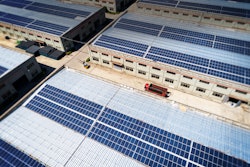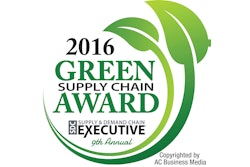
Sustainability has been called many things, “a dirty word” and “a buzzword” among them. But the evidence is mounting that times have changed. Sustainable practices have become a critical component in how customers and companies are defining success. In fact, according to a recent Unilever study, one in three consumers are making buying decisions based on social and environmental impact. Sustainability has become a market opportunity worth more than $1 trillion.
Today’s buyers want to align themselves with companies that are taking their environmental and social impact seriously. According to the Unilever study, 78 percent of U.S. adults admitted to feeling better about a purchase when they knew the products were produced with sustainable practices.
Our Current Environment
E-commerce continues to grow at exponential rates, and customer expectations seem to be growing at similar speeds. Demands for fast, inexpensive shipping have never been higher. Because of this, emphasis is frequently placed on getting orders delivered quickly and in perfect condition, while less thought is put into sustainable practices, like efficient carrier selection, packing optimization and material usage. The byproduct of this type of decision making is an overcompensation of packaging, which has led to a massive packaging problem and more than 36 million tons of packaging waste in landfills.
Creating a “greener” supply chain is not fantasy. It is possible to reduce your environmental impact while improving top line potential and reducing costs to realize additional bottom line benefits.
3 Ways to Improve Sustainability
1. Know the Impact
In 2014, the United States manufactured more than 35 million tons of cardboard. The New York Times highlighted this astounding number in an article titled, “E-commerce: Convenience Built on a Mountain of Cardboard,” in which they detailed the impact e-commerce has had on our environment.
According to the LA Times, more than 9.1 billion tons of plastic has been produced since its creation in the 1950s, and the plastic produced 60 years ago is still around today and likely will be with us for centuries or longer.
Where does all the plastic go?
-
9 percent was recycled.
-
12 percent was incinerated.
-
79 percent is in landfills or the environment.
Plastic used in packaging currently accounts for 42 percent of the packaging trash problem and is expected to continue to increase.
2. Set a Goal
Hyatt Hotels was forced to implement conservation efforts in 2015 due to California’s severe drought. In the first year, Hyatt reduced the water used per guest night by 12 percent. These results catalyzed Hyatt to create the sustainability goals they now call 2020 Vision.
Getting everyone engaged is the hardest part, but according Hyatt’s Senior Manager for Environmental Affairs Marié Fukudome: “Everyone can play a role on a daily basis.” Talk to your team about operational efficiencies, responsible consumption, and what sustainable practices mean for your business. It is important to include every employee in setting sustainability goals. By making it a topic of conversation, everyone in the logistics network will feel socially responsible and take ownership of the steps that can be taken to reduce your environmental impact.
Don’t stop there. Take the conversation to vendors, partners and customers. Many retailers now require packaging made from renewable materials, and talking to customers also will allow you to learn about your company’s post-purchase reputation and the alternatives clients would like to see throughout your supply chain.
This also is a great time to discover how innovation or policy change can become a competitive advantage. Some customers take their complaints and ideas to Twitter or Yelp, but most just find somewhere else to shop. Customers with sustainability on their minds are demanding we do better. Make them allies, and put them to work spreading the word about your environmental commitments.
3. Leverage Technology and Data
We live in a time where houses produce their own electricity, batteries charge without cords and plugs, and electric cars accelerate from 0 to 60 mph in 2.275507139 seconds.
Supply chain advancements have kept a similar pace, from data-driven transportation management systems, intelligent routing software and software as a service (SaaS) warehouse management systems to embedded software enabling driver safety advancements, autonomous trucks and platooning. Similar progress has been made in packing material innovation with molded fiber printing that removes the need for additional packaging or labeled wrapping and micro-fibrillated cellulose, which gives paper products the strength and characteristics of plastic without the lasting side effects.
Supply chains generate an immense amount of data that was previously unusable. But today’s technology, driven by artificial intelligence and machine learning, can consume and analyze the information and, in turn, automate decision making, spot inefficiencies, and improve the customer buying experience. All of this results in margin and sustainability improvements.
Accurate data also is key to building greener and more responsible logistics processes. The right technology reduces packaging, routes more efficiently, and sources cleaner products from companies who share your commitment to sustainable businesses practices.
To ensure improvements, measure what you do today, calculate and set benchmarks, and report the results to everyone involved.
Benefits to Becoming Sustainable
Building a sustainable supply chain has many benefits. Not only do green practices open doors to new selling opportunities, but they also offer excellent options for reducing costs. Procter and Gamble reported cost savings in excess of $1 billion while cutting their environmental impact in half, and others have reported finding even greater efficiencies.
Although bottom line improvements are nice, the real benefit is being part of a solution that will create a better workplace for our employees and a better planet for our children.













